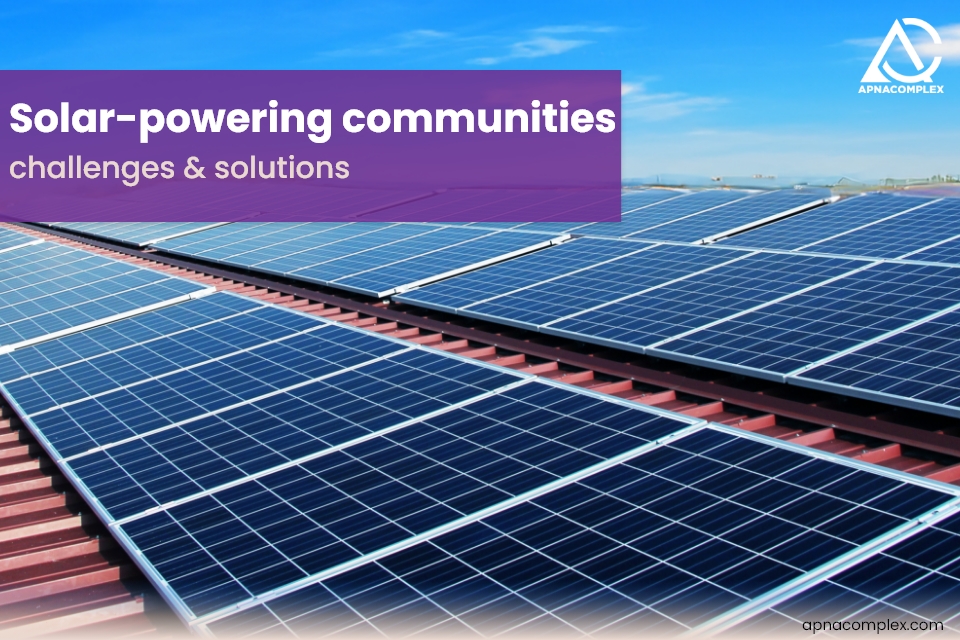Get the Solar Edge – Resolving challenges in transitioning to clean energy
Product News clean energy, green technology, solar power, solar power system, sustainabilityTransitioning to a sustainable energy infrastructure is the biggest challenge facing gated communities today. Solar energy systems have emerged as one of the most viable and economical alternatives to conventional power sources. However, challenges still remain in adopting solar panels.
Transitioning to solar panels
There are many benefits in transitioning to solar-powered systems. Our article Solar Energy: A Sustainable Solution for Housing Societies explains these in detail. Housing societies use solar panels to power a range of appliances, from water heaters to ensuring power backup.
However, the adoption is not without challenges. Read below some of the common roadblocks you may face along with some possible solutions.
Gathering consensus
Investing in a solar-powered infrastructure requires upgrades to existing systems. Depending on the scale, these enhancements can be extensive. Since this is a long-term investment, you cannot undertake it without the agreement of the committee members. Despite its benefits, management committees often face disagreements and reluctance from some quarters on issues like cost of installation.
Hence, gathering consensus is critical to get the project going. Provided all the members with detailed information on solar panels, their scope, benefits, and installation costs.
Space & load-bearing issues
Rooftops with ample sunlight are preferred for installation. However, the roof must have the load-bearing capacity to bear the panels. It is critical that you start with an engineer assessing the roof’s capacity. An expert can also advise on optimising your roof space and strengthening its ability to withstand the panels’ weight.
Electrical Infrastructure
You cannot install the panels without a proper assessment of the society’s electrical infrastructure. Possible changes may include upgrades in the capacity of transformers, distribution lines, and meters. Since solar panels produce DC current, you will also need inverters to convert this to AC current used in homes.
You must also decide between on-grid or off-grid connection. An on-grid connection has lower installation and maintenance costs. Off-grid systems are comparatively expensive but have the self-dependency that comes from using batteries for power storage. It’s important these details are properly considered before a decision is made.
Financing
The upfront costs of installing a solar energy system are considerable. The commercials can be the biggest roadblock, often overturning wide consensus. However, the cost must be viewed against the long-term savings on electricity bills and as a step towards self-sufficiency. Residential societies can also apply for a 30% subsidy by the Ministry of New and Renewable Energy for rooftop solar panel installation. In addition, societies can also claim reductions in income tax.
Capacity building and training
The vendor carrying out the installation is also typically responsible for any major repairs or servicing. However, the society must be capable of daily management and maintenance of their solar energy systems. The society must appoint a designated team to effectively manage such requirements. The team should be trained by the vendor in carrying out on-spot maintenance activities.
Looking for the right vendor
Fortunately for the consumers, the solar panel industry is a fiercely competitive market. So, it’s best to pick a vendor who can extend support from pre- to post-installation. This includes rooftop inspection, installation, financing support, and annual maintenance. Also, make sure the vendor has a BIS certification.
ApnaComplex has been working with Management Committees and Resident Welfare Associations in connecting with leading solar panel vendors. If interested, you can reach out to us at support@apnacomplex or call 80886 11229.
